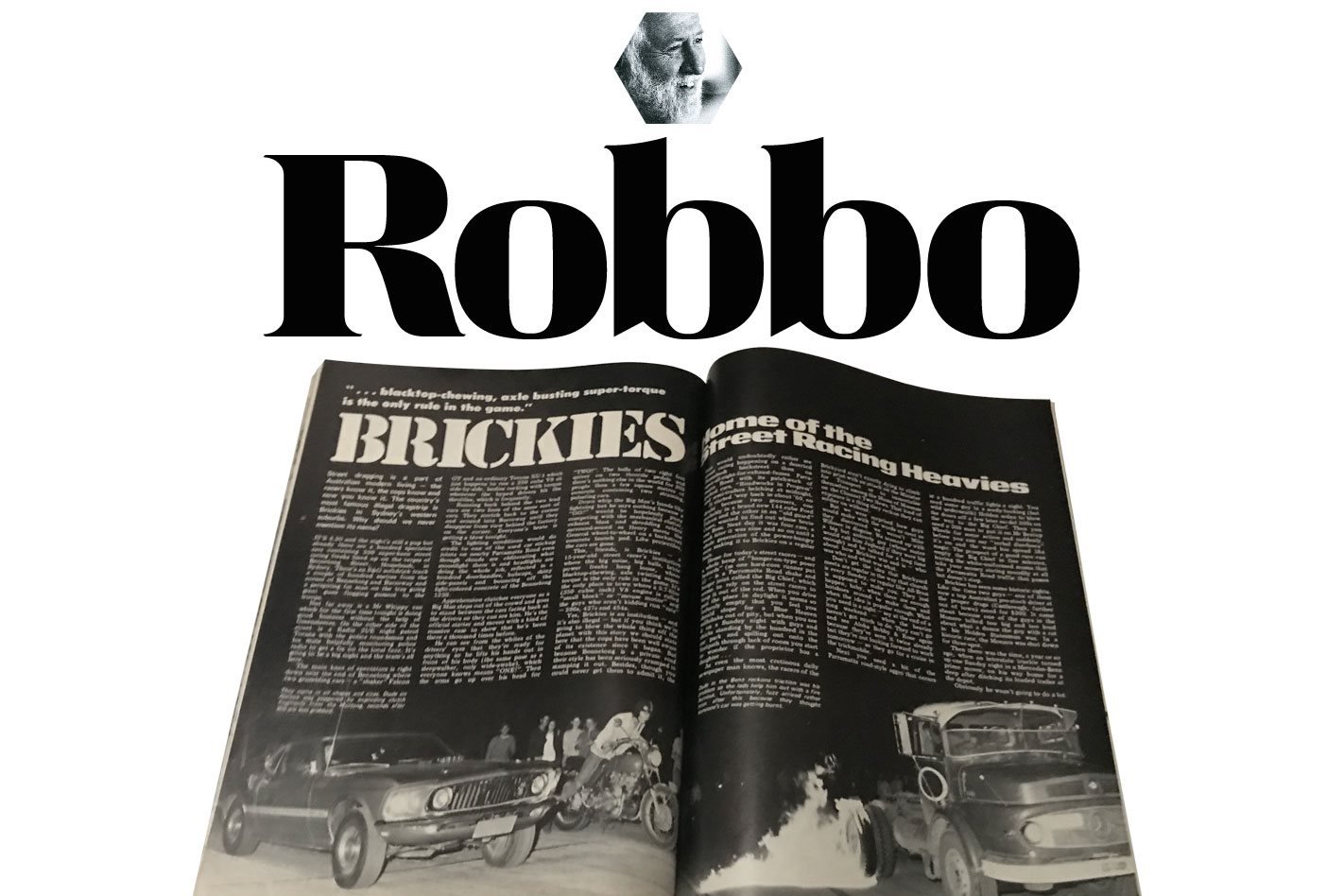Brickies, once Australia’s most famous illegal dragstrip, is now totally respectable as the home to Sydney’s Olympic Park and numerous high-rise apartments. Back in the 1960s and 1970s, the Homebush area was a wasteland of old factories, a huge brick pit – hence Brickies – and contaminated swamps. Plus Bennelong Road, a private street and an illicit drag racing nirvana.
Hot-shoe hoons, hanging out at a Parramatta Road Big Chief hamburger joint, used word of mouth – remember this is pre-mobile phones – and most Friday and Saturday nights Brickies was home to 50 racers plus around 300 spectators. It was Falcon GT versus Torana XU-1, Charger against Monaro, plus really anything that ran, often including a cluster of hot ‘rats’, cars running 396s, 427s and 454s, rather than small-block 350s.
The Brickies story appeared in Wheels, December 1976, though initially it was intended to be the lead story of a new magazine from Murray Publishers, owners of Wheels. Provisionally called Treads and to be edited by Steve Cropley, Wheels’ assistant editor, it was to be a “young car nut’s newspaper”. When the idea of the new title was killed, Cropley and I decided the Brickies story deserved to run in Wheels. To preserve the author’s identity the story was by-lined Special Writer, though in reality the writer was Cropley.
The idea came from the late Geoff Paradise, founding editor of Street Machine magazine, and lover of fast hot rods and custom street cars. To get the story, Cropley and Paradise hit the Brickies on two consecutive nights in Geoff’s black Holden HQ 308 V8. Larrikin-journo Paradise couldn’t help himself: the HQ performed a couple of burnouts for the crowd before Geoff decided he couldn’t afford to destroy more rubber.
Cropley quoted spectators who claimed two of Australia’s top Pro Stock drivers raced for $300, running their hot Monaro and Statesman. Another night an interstate truckie turned up in his Mercedes-Benz prime mover. With the rear rubber covered in a flammable liquid, his fiery burnout so lit up the night that the cops arrived thinking somebody’s car was getting burnt.
One of Paradise’s photographs accompanying the story showed a Morris 1100 lined up against an air-cooled Fiat 500, proving Brickies really was a true venue for RWYB: Race What Ya Brung. At one stage Brickies even took on the mantle of respectability: homemade Christmas tree lights, three amber and one green, temporarily replaced the starter’s one-two-three-go hand movements.
The police tolerated Brickies, knowing they would rather street racing happened on a deserted Homebush backstreet than on “open-all-night-for-exhaust-fumes” Parramatta Road. Occasionally, though, the fuzz would wait until there was a healthy gathering on Bennelong Road and then block the narrow bridge to Parramatta Road, checking all the cars for roadworthiness as they came out.
To understand the appeal of Brickies you only need watch the 1977 movie The FJ Holden, in part set on Bennelong Road. The Brickworks was also used as a film location for the Bartertown scenes in Mad Max Beyond Thunderdome.
Between 2009-2016 Olympic Park returned to motorsport as the location of a V8 Supercars road circuit. We like to think the naming of a couple of streets close to the old drag strip finish line – Nuvolari Place, after a legendary Italian driver, and Monza Place, for the great Italian circuit – pays a bizarre homage to Brickies.





